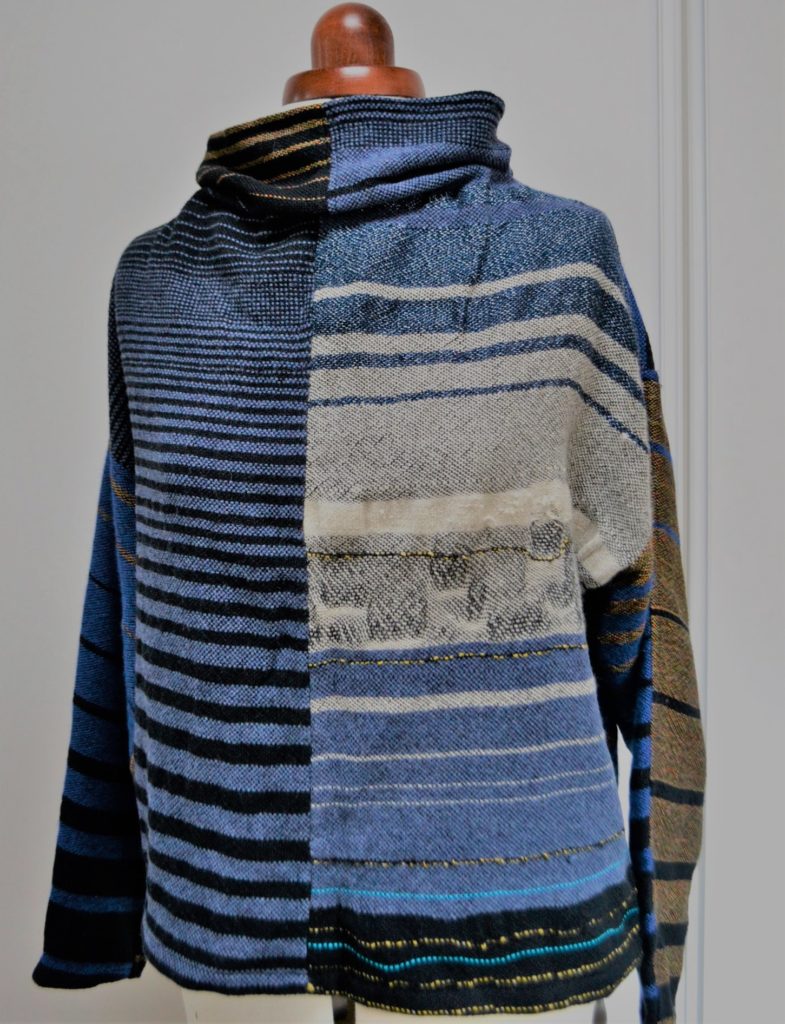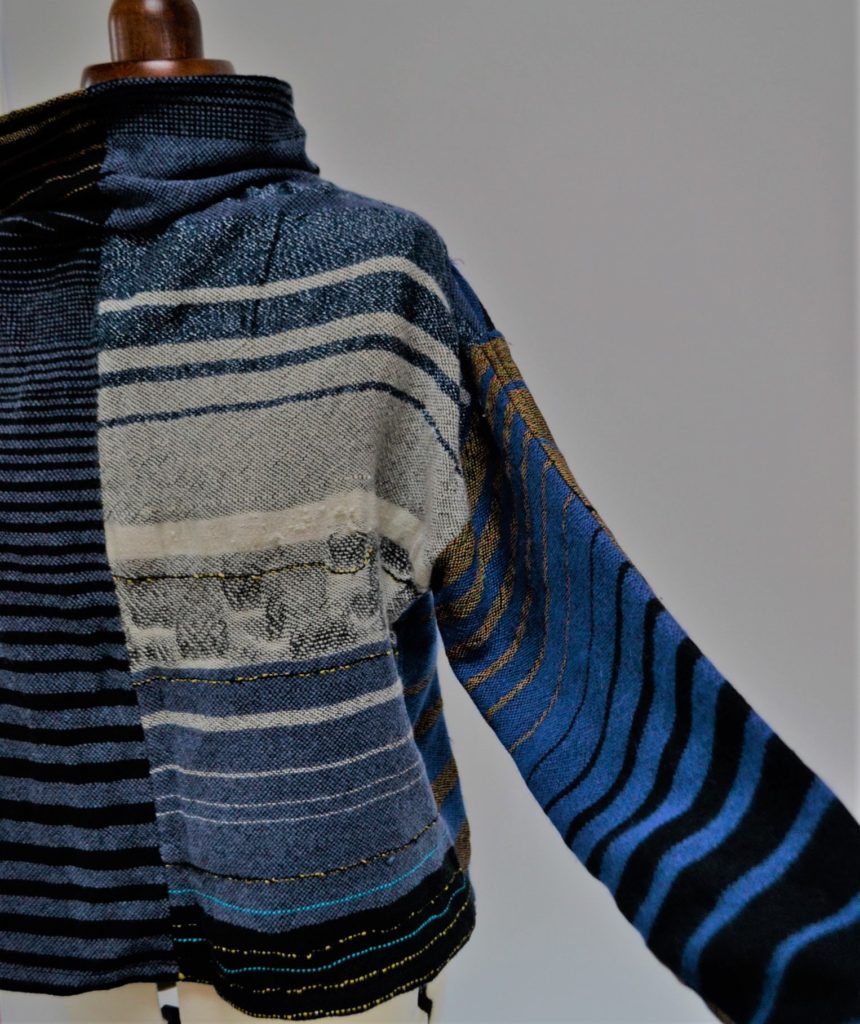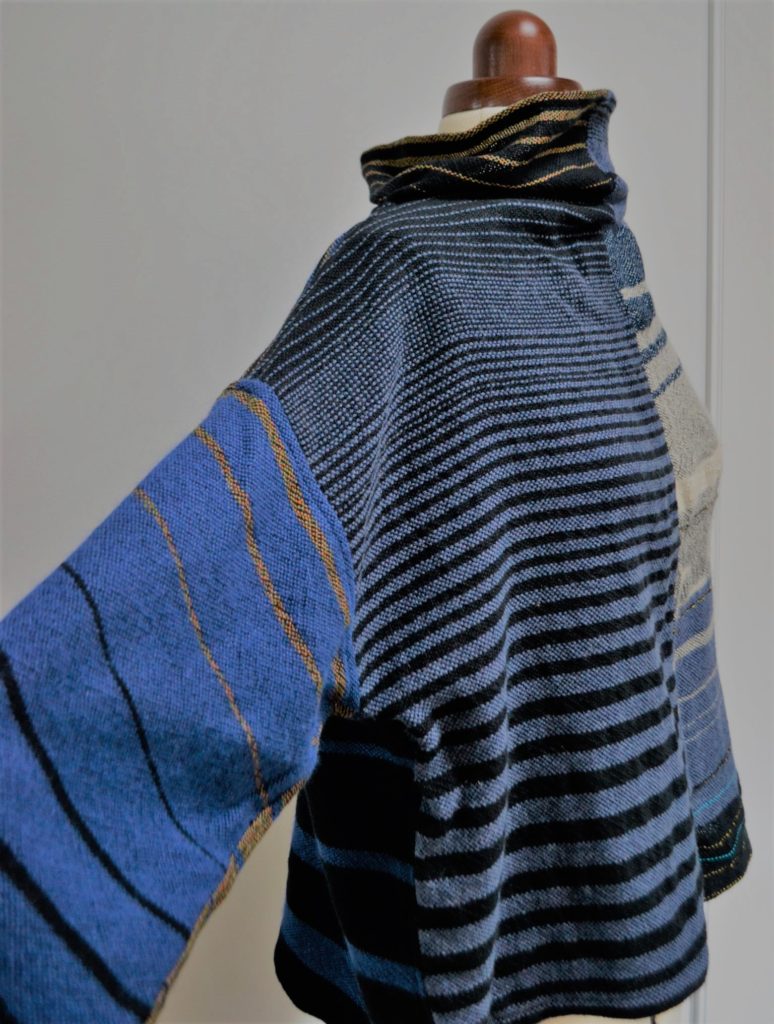Knitting creates wonderful and comfortable clothes. I’m a rather slow knitter and very dependent on patterns. So I’m always looking for ways to make my weaving work better for me in that department.
Although it is cold enough for this type of jumper post in some places in the world I’m aware that jumpers are the last thing on our mind here in Australia at the moment. Old Bar is graced with exceptionally temperate weather and we have luckily avoided the worst of the heat because of sea breeze, but temps have been very high around us!
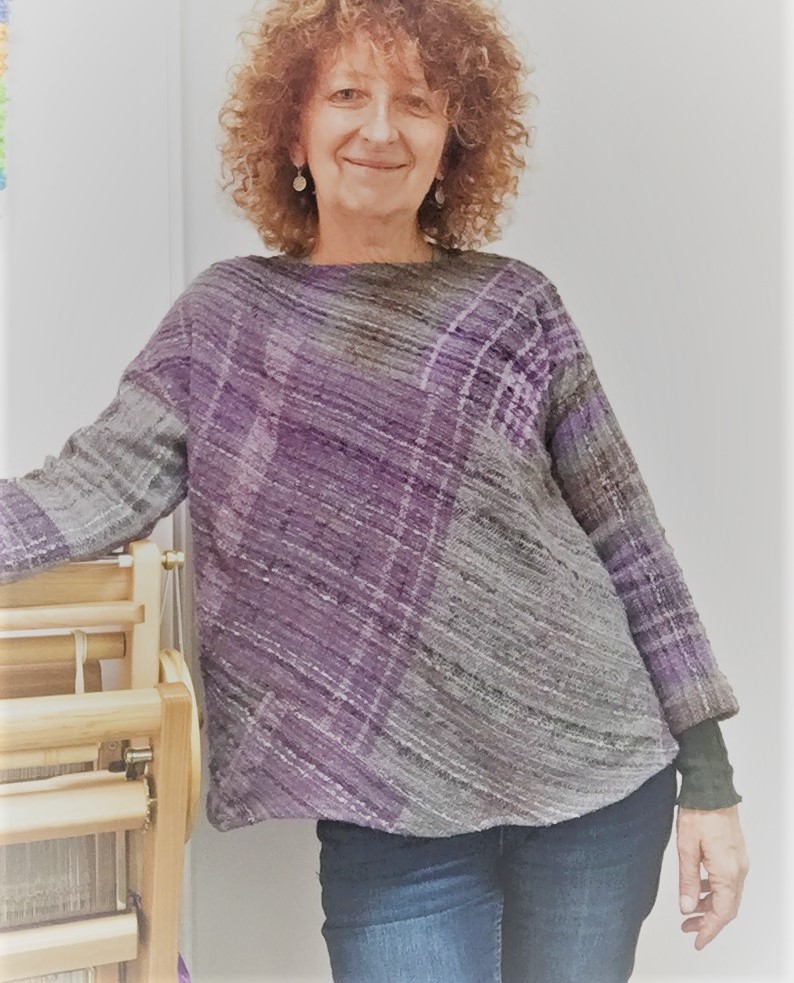
Some time ago I had a very successful make with a pre-wound cashmere warp/lambswool and silk weft cloth. It was a super soft cashmery texture and perfect for the bias ‘box’ style of jumper. The body was made up with the ingenious bias box formula which created a dropped shoulder line, then sleeves were added. An absolute (except for the neckline) no waste garment. I still think that a successful handknit has the most resilience and durability in a jumper but these types of handwoven garments are great to weave, take less time to create, and can be darned with the visible stitched mending technique when the time comes. The bias box technique for woven clothing really opens up options for clothing with handweaves because it is calculated and created with the variations of width handweavers inevitably create. A narrow loom of any type is perfect for all of these designs…even an inkle loom if you can weave many, many metres to cover your body.
Having sold you on bias cut clothing I just made another jumper from the Shitate no Hon book which I think is a goer too. This is made on the straight grain but with nifty pattern cutting elements thrown in. It is design 7 of the 54 patterns in the book.
The garment, once again, has minimal waste. The whole funnel neck is cut with the front and there is shaping in the shoulder line, producing a ‘kimono’ style cut with a dropped shoulder and some shaping in the sleeves. The book is in Japanese but with clear diagrams and pattern drafting instructions which are basically straight lines.
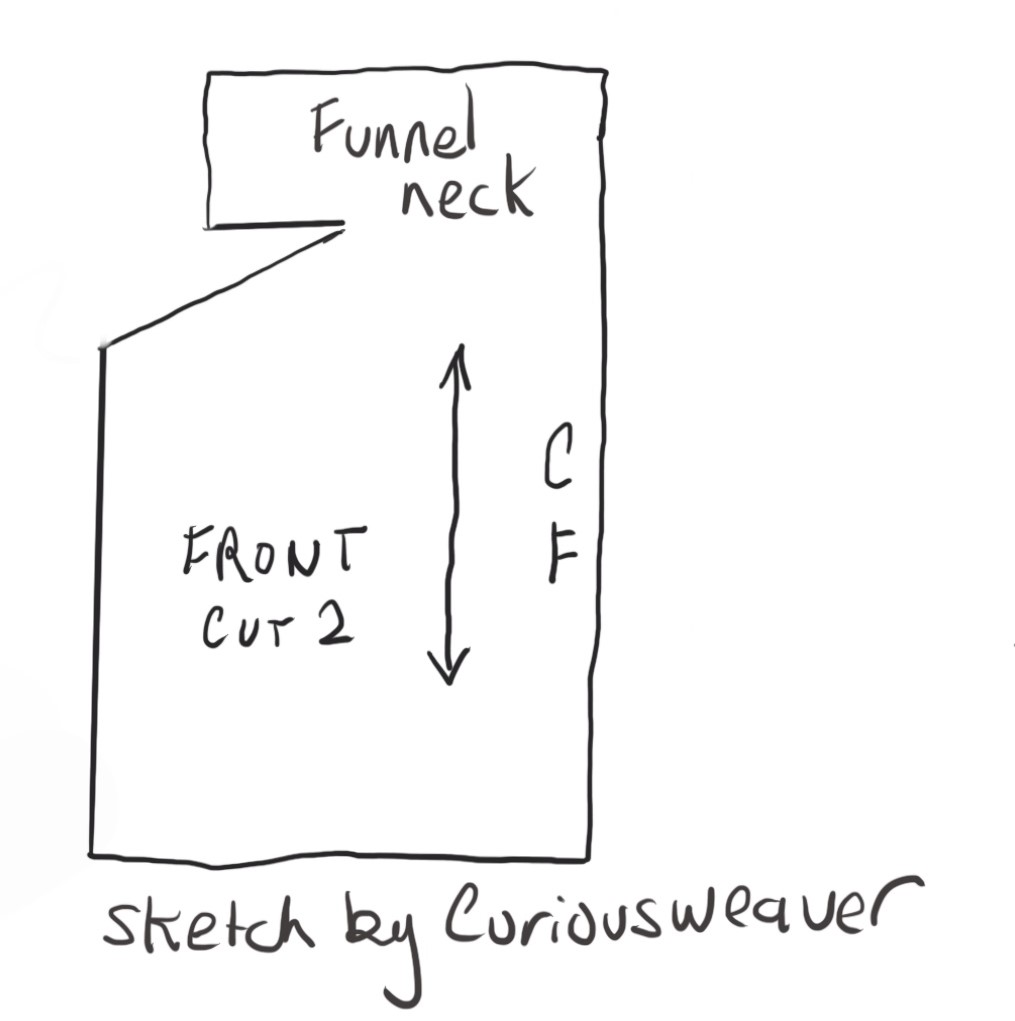
This jumper has no closures. It is an easy fitting style and just goes straight over the head even though the garment doesn’t stretch as it would with knitted cloth. For this type of garment there needs to be more room around the body and sleeve but the secret is the neckline needs to accommodate the head. I think 60cms for the total neckline is a starting point and all of my necklines in pullover garments have this.
In this type of pattern I had to cut some shapes around the necklines and I just went straight in and cut before immediately stitching the seams. In Saori garments or indeed, in my opinion, most handweaves (which are woven with a dpc of less than 18-20 ends), all edges and seams should be enclosed using the selvedge edge or a flat felled seam for durability. Unless you want the ragout fringe effect where 2 or 3 rows should be stitched to secure the fraying. Fraying is only a negative on seaming, you can go
beresque anywhere else.
Is a flat felled seam easy to stitch? Yes, most of the time, but you will need an iron to prepare it. And sometimes you need some patience where there are multiple joins and turns…but that is the lot of sewing. It’s worth it.


